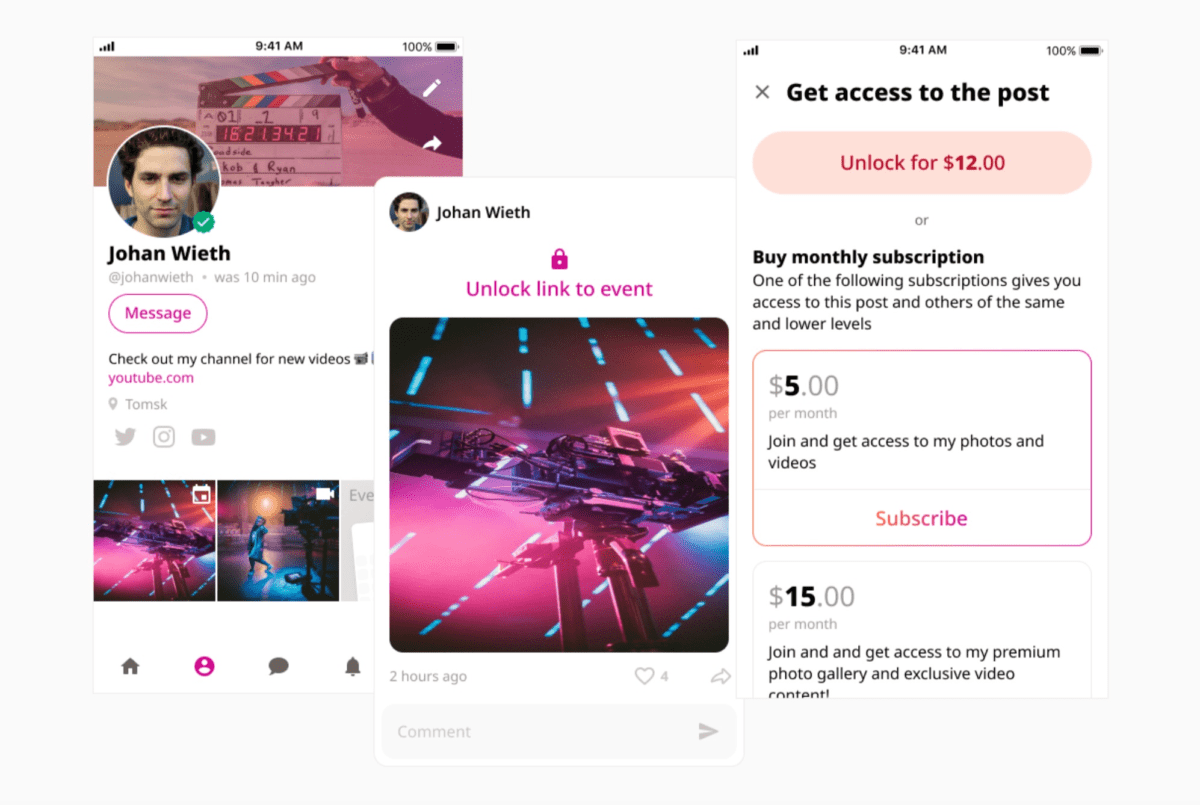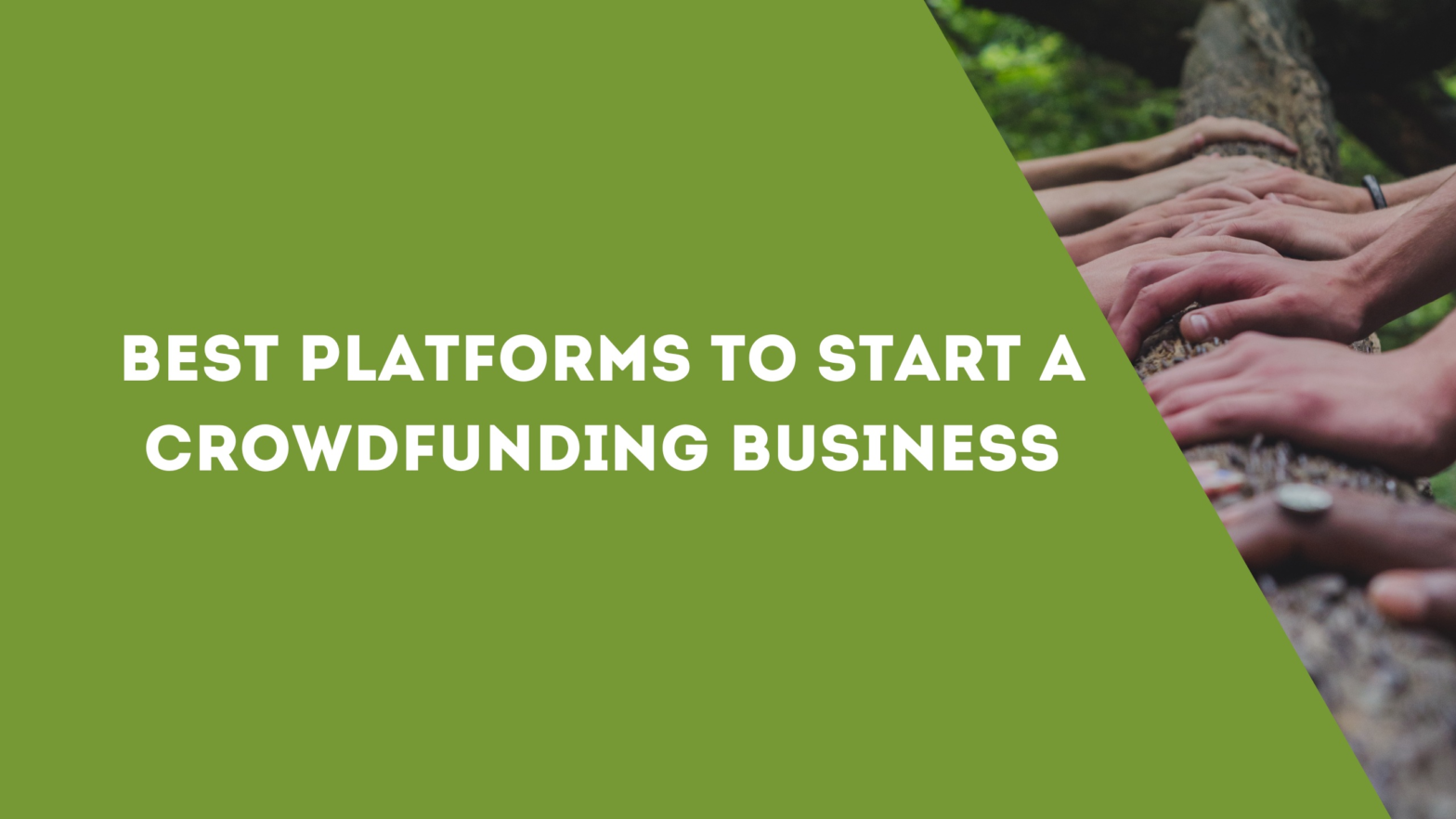Introduction
Definition of Crowdfunding
Crowdfunding is a method where individuals or businesses raise money for projects, causes, or ventures by seeking small contributions from a large number of people, typically via online platforms. This approach has revolutionized the way project creators and entrepreneurs gather funds, bypassing traditional avenues like banks or venture capital. As more individuals explore how to start a crowdfunding platform, the potential for diverse and innovative fundraising avenues continues to grow exponentially.
Importance of Crowdfunding in Today’s World
In today’s digital age, crowdfunding platforms have become a pivotal part of the fundraising landscape. They offer a unique business model that empowers individuals to bring their ideas to life, from innovative tech products to artistic endeavors. With the rise of the internet, starting a crowdfunding platform or website has become more accessible, allowing for a diverse range of projects to find their target audience and secure the necessary funding. Moreover, these platforms provide a legal framework for transactions, ensuring that both project owners and backers are protected.
Brief Overview of the Crowdfunding Market
The crowdfunding market has witnessed exponential growth in recent years. From niche crowdfunding platforms focusing on specific industries like real estate crowdfunding to global platforms catering to a wide array of projects, the industry is booming. Market research indicates a shift in the way people invest, with many preferring to support individual projects or businesses directly. This trend underscores the importance of understanding the development process, core features, and technology stack required to create a successful crowdfunding platform in today’s competitive landscape.
How to start an online crowdfunding platform

What is Crowdfunding and How Does It Work?
Crowdfunding is a modern method of raising funds for a project or venture by collecting small amounts of money from a large number of people, typically via online platforms. Instead of seeking substantial sums from a few investors, crowdfunding campaigns harness the power of the collective to bring ideas to life. This approach democratizes the funding process, allowing anyone with an idea to reach out to a global audience and secure the necessary resources.
Types of Crowdfunding Platforms
Crowdfunding platforms are the digital arenas where these fundraising campaigns take place. Over the years, various types of platforms have emerged, each catering to specific needs and business models:
Rewards-based Crowdfunding: Here, backers receive a reward for their contribution, which is often the product or service the campaign aims to produce. This model is popular among startups and entrepreneurs looking to test their products in the market.
Equity-based Crowdfunding: In this model, backers receive equity or shares in the company they’re funding. It’s a way for startups to raise capital without taking on debt, and for investors to get in on the ground floor of potentially lucrative ventures.
Donation-based Crowdfunding: This altruistic model is where backers donate money without expecting any return. It’s commonly used for charitable causes, personal emergencies, or community projects.
Real Estate Crowdfunding: A newer entrant in the crowdfunding scene, this model allows individuals to invest in real estate projects, earning returns from rental income or property appreciation.
Crowdfunding Market Overview
The crowdfunding market has seen a meteoric rise in the past decade. As technology has made it easier to start a crowdfunding platform or website, more and more individuals and businesses are turning to these online platforms to raise money for their ventures.
Growth and Trends in the Crowdfunding Industry
The crowdfunding industry’s growth can be attributed to several factors. The ease of reaching a target audience, the allure of supporting innovative projects, and the potential for high returns have all contributed to its popularity. Moreover, the development process for creating a platform has become more streamlined, with a plethora of resources available for budding entrepreneurs.
Recent trends indicate a shift towards niche platforms that cater to specific industries or causes. For instance, platforms focusing solely on environmental projects or tech innovations have emerged. Additionally, the integration of social media accounts with crowdfunding campaigns has amplified their reach, making it easier for project creators to tap into larger networks and ensure the success of their crowdfunding campaign.
In conclusion, understanding the nuances of crowdfunding and the various platforms available is crucial for anyone looking to venture into this domain. Whether you’re an entrepreneur aiming to raise funds for your startup or an investor seeking the next big thing, the crowdfunding world offers a plethora of opportunities.
Starting from Scratch: Building Your Crowdfunding Platform

Turn Your Idea into a Business Plan and Set a Budget: Starting a crowdfunding platform begins with a clear vision. Convert this vision into a tangible business plan. Outline your objectives, target audience, funding goal, and revenue model. Setting a realistic budget is crucial. Factor in costs for technology, marketing, payment processing, and other operational expenses.
Study the Competitive Landscape and Find Your Niche: The crowdfunding market is bustling with platforms catering to various niches. Research existing platforms to identify gaps or underserved areas. By finding a unique niche, you can differentiate your platform and cater to a specific target audience, increasing your chances of success.
Doing Market Research: Dive deep into market trends, successful crowdfunding campaigns, and emerging needs. This research will provide insights into what potential users seek in a platform and how to tailor your offerings.
Importance of Understanding Your Target Audience: Knowing your target audience is paramount. Understand their preferences, challenges, and what motivates them to contribute to campaigns. This knowledge will guide your platform’s features, design, and marketing strategies.
Analyzing the Crowdfunding Market: Examine the global crowdfunding market to gauge its size, growth rate, and key players. Identify trends, such as the rise of equity crowdfunding or the popularity of creative projects. This analysis will inform your platform’s focus and positioning.
A Step-by-Step Guide on Crowdfunding Platform Development

Planning and Strategy: Begin with a clear roadmap. Define your platform’s core features, tech stack, and user flow. Assemble a development team, including project managers, developers, and designers.
Design and User Experience: A user-friendly design is vital. Ensure your platform is intuitive, visually appealing, and responsive. Prioritize features that enhance user experience, such as social media account integration or a robust campaign management system.
Development and Testing: Once the design is finalized, move to the development phase. Regularly test each feature for functionality and security. User testing can provide invaluable feedback, helping you refine the platform before launch.
Launch and Feedback Collection: After thorough testing, launch your platform. Encourage early users to provide feedback. This feedback loop will help you identify areas for improvement, ensuring your platform remains competitive and user-centric.
In conclusion, building a successful crowdfunding platform requires meticulous planning, market understanding, and a commitment to user experience. By following these steps and staying attuned to market needs, you can create a platform that stands out in the bustling crowdfunding industry.
Core Features of a Successful Crowdfunding Platform

Building a successful crowdfunding platform requires a combination of essential features that cater to both project creators and backers. Here’s a breakdown of the core features that can make or break your platform:
Welcome Page
The welcome page is the first impression users get of your platform. It should be visually appealing, easy to navigate, and provide a clear call to action. Highlight successful crowdfunding campaigns, showcase the platform’s unique selling points, and guide new users on how to start a crowdfunding campaign or back a project.
Fundraisers’ Section
This section is dedicated to those looking to raise money for their projects. It should allow creators to easily set up their campaigns, define their funding goal, and provide detailed information about their project. Including features like video integration, image galleries, and detailed project descriptions can enhance this section.
User Account and Dashboard
A user-friendly dashboard is essential for both backers and creators. Users should be able to easily manage their profiles, track their contributions, or monitor the progress of their campaigns. The dashboard should provide analytics, notifications, and easy access to campaign management tools.
Campaign Management Tools
For project founders, managing their campaign efficiently is crucial. Tools should include options to update campaign details, communicate with backers, and track funding progress. Features like setting milestones, updating backers with news, and user testing feedback mechanisms can enhance the campaign’s success rate.
Payment Processing and Popular Payment Gateways
To facilitate transactions, integrate popular payment gateways that are trusted and widely used. Ensure the payment process is seamless, secure, and supports multiple currencies. Additionally, provide options for both one-time contributions and recurring donations.
Social Media Integration and Sharing Tools

In today’s digital age, the power of social media cannot be underestimated. Integrate sharing tools that allow users to easily promote campaigns on platforms like Facebook, Twitter, and Instagram. This not only increases the campaign’s visibility but also taps into a broader audience base.
In conclusion, while the tech stack and development team play a pivotal role in building the platform, it’s the core features that determine its success. Whether you’re looking to create a crowdfunding platform from scratch or enhance an existing one, focusing on user experience, functionality, and integration with popular tools and platforms is key. As the crowdfunding industry continues to evolve, staying updated with the latest trends and incorporating feedback from users will ensure your platform remains competitive and relevant.
Challenges and Solutions in Crowdfunding Website Development

Developing a crowdfunding platform is not without its challenges. From navigating legal complexities to ensuring user trust, there are numerous hurdles to overcome. Here’s a look at some of the main challenges and their solutions:
Main Crowdfunding Website Challenges to Consider
Starting a crowdfunding platform requires a deep understanding of the landscape. One must consider the tech stack, the business model, and the unique features that will set the platform apart. Additionally, ensuring that the platform caters to both project founders and backers is essential. The development cycle should be iterative, incorporating feedback and making improvements as needed.
Legal Framework and Regulations
One of the significant challenges in the crowdfunding business is navigating the legal landscape. Different countries have varying regulations concerning equity crowdfunding, reward-based crowdfunding, and more.
Solution: It’s crucial to consult with legal experts familiar with crowdfunding platforms’ legal requirements. Ensure that your platform adheres to all regulations, provides clear terms of service, and transparently handles disputes.
Ensuring Trust and Security
Trust is the bedrock of any successful crowdfunding campaign. Backers need to feel confident that their money is going to a legitimate cause and that the platform will handle their funds securely.
Solution: Implement robust security measures, including SSL certificates, two-factor authentication, and regular security audits. Highlighting these security features can help instill trust. Additionally, having a transparent review and vetting process for campaigns can further enhance credibility.
Payment Challenges and Solutions
Handling payments is a critical aspect of any crowdfunding site. From processing donations to disbursing funds to project founders, the payment process needs to be seamless and secure.
Challenges:
Handling multiple currencies.
Dealing with failed transactions.
Ensuring timely disbursement of funds.
Solutions:
Integrate with payment gateways that offer multi-currency support.
Have a clear refund and dispute resolution policy.
Use automated systems to ensure that funds are disbursed once the funding goal is reached.
In conclusion, while the journey to create a crowdfunding platform can be fraught with challenges, with the right approach and solutions, these can be effectively addressed. By focusing on user trust, adhering to legal frameworks, and ensuring a seamless payment process, you can set the foundation for a successful crowdfunding platform.
Advanced Features and Trends in Crowdfunding

The crowdfunding landscape is ever-evolving, with platforms constantly innovating to stand out and cater to the needs of their users. Let’s delve into some advanced features and trends that can elevate your platform:
Be Unique: Extra Features of the Crowdfunding Platform
To differentiate your platform from the myriad of crowdfunding websites out there, consider integrating unique features. For instance:
Interactive Campaign Timelines: Allow users to visually track the progress of campaigns, from inception to funding goal achievement.
Integrated Marketing Tools: Equip users with tools to promote their campaigns on other online platforms, enhancing their reach.
Virtual Reality (VR) Previews: For product-based campaigns, VR previews can offer backers a tangible feel of the product.
New Trends to Watch in the Crowdfunding Industry
The crowdfunding industry is not static. Some emerging trends include:
Equity Crowdfunding: More platforms are allowing backers to receive equity or shares in the projects they support.
Niche Platforms: Specialized platforms catering to specific sectors, like arts or environment, are on the rise.
Crypto-based Funding: With the rise of cryptocurrencies, some platforms are now accepting digital currencies as a form of backing.
Technology Stack: Choosing the Best Tech for Your Platform

The tech stack you choose can significantly impact the performance and scalability of your crowdfunding site. Considerations include:
Backend Frameworks: Options like Ruby on Rails or Node.js can offer robust backend support.
Frontend Tools: React or Angular can ensure a dynamic and responsive user interface.
Database Management: PostgreSQL or MongoDB can efficiently handle user data and campaign details.
Cloud Services: Platforms like AWS or Google Cloud can offer scalable hosting solutions.
Importance of Mobile Responsiveness and Crowdfunding Apps
In today’s digital age, a significant portion of users accesses platforms via mobile devices. Thus:
Mobile Responsiveness: Ensure your platform’s design is responsive, offering a seamless experience across devices.
Dedicated Apps: Consider developing a dedicated crowdfunding app, enhancing user engagement and offering features like real-time notifications.
In conclusion, when looking to start a crowdfunding platform, it’s essential to stay updated with the latest trends and integrate features that cater to the modern user’s needs. By focusing on uniqueness, staying abreast of industry shifts, choosing the right tech stack, and prioritizing mobile users, you can position your platform for success in the competitive crowdfunding business landscape.
Platforms for Crowdfunding
Crowdfunding platforms have revolutionized the way creators raise funds for their projects and endeavors. While many platforms have emerged over the years, each comes with its unique set of features, advantages, and challenges. Let’s delve into some of the most notable platforms, including Ko-fi and its alternatives, and explore the services offered by Scrile, a comprehensive IT company.
Ko-fi

Pros:
Versatile platform aiding creators in growing their businesses with a finance plan.
Offers facilities appreciated by its user base.
Cons:
Basic blogging setup, lacking technological advancements.
Absence of advanced features found on other platforms.
Many features locked behind a paid “Gold” membership.
No discovery feature or portal system for new creators.
Account creation required for donations.
Integration challenges with platforms like WordPress.
Best alternatives to Ko-fi
1. Crowdfundly
A platform boasting superior sharing features with a ‘Broadcast’ option. It provides space for exclusive content and is cost-effective with both free and pro versions. Crowdfundly also offers similar payment methods as Ko-fi, making it a viable alternative.
2. Buy Me A Coffee
This platform stands out due to its user-friendly approach, allowing donations without account creation. Its attractive naming convention encourages donations, making it a favorite among many creators.
3. Patreon
Tailored for creators posting regular content, Patreon seamlessly integrates with platforms like Streamlabs, Discord, and WordPress, offering a holistic experience for its users.
4. Liberapay
A platform that emphasizes community involvement, Liberapay allows users to suggest and vote for their favorite content. It also supports multiple currencies and languages, catering to a global audience.
5. Flattr
Promoting content sharing with ‘Browser Integration’, Flattr also offers an Android app for easy sharing, making it a favorite among tech-savvy creators.
6. Open Collective
Transparency is the hallmark of Open Collective. Users can see where money is spent and collected, fostering trust and accountability.
7. Bounty Source
Perfect for those immersed in open-source projects, Bounty Source allows users to earn by improving these projects or solving related issues.
8. Tipeee
A platform where creators receive payments from their community, Tipeee emphasizes content quality and regular posting, ensuring creators stay engaged and productive.
9. Stripe
Ideal for business-minded creators, Stripe builds economic infrastructure for online businesses, streamlining the fundraising process.
10. Scrile
Scrile is a comprehensive IT company with over 20 years of experience in software development. They offer a complete development cycle, ensuring integrated and efficient solutions tailored to client needs. Their emphasis on design crafts user-friendly experiences, and their development expertise spans a wide range of technologies. Scrile values long-term partnerships, providing continuous support and necessary product enhancements. Their client-centric approach ensures that solutions are tailored to facilitate client success. For those seeking autonomy, Scrile offers the option to purchase the source code of their solutions, providing complete ownership, intellectual property security, and long-term economic advantages.

Benefits of Working with Scrile:
Fast Time to Market: Swift and efficient market entry.
Low Initial Investment: Start with ready-made solutions and customize.
Predictable Workflow: Consistent progress with Scrum methodology.
Scalability: Cutting-edge cloud solutions and Kubernetes deployment.
In conclusion, while platforms like Ko-fi have their place in the crowdfunding landscape, numerous alternatives offer unique features and benefits. For those looking to start a crowdfunding platform or website, it’s essential to research and choose a platform that aligns with their goals and audience. Scrile, with its comprehensive services and client-centric approach, stands out as a reliable partner in this journey.
Scrile: A Comprehensive IT Solution

Overview of Scrile and Its 20+ Years of Experience
In the dynamic world of IT solutions, Scrile stands out as a beacon of reliability and innovation. With over two decades of experience, Scrile has carved a niche for itself, offering a wide array of services tailored to meet the specific business needs of its clients. This extensive experience not only testifies to their expertise but also to their adaptability and commitment to staying abreast of the ever-evolving technological landscape. For those looking to start a crowdfunding platform or website, Scrile’s rich history and proven track record make it an ideal partner.
Scrile Connect: A Turnkey SaaS Solution
In the vast repertoire of Scrile’s offerings, Scrile Connect emerges as a comprehensive turnkey SaaS solution. Designed for rapid deployment, it mirrors the business models of successful platforms like Patreon and OnlyFans. But what sets Scrile Connect apart is its adaptability. Recognizing the unique demands of every business, Scrile offers the flexibility to introduce features on demand, ensuring that the platform remains aligned with the evolving needs of its users. This adaptability is particularly beneficial for those in the crowdfunding sector, where the landscape is constantly shifting and the ability to quickly implement new features can be a game-changer.
Key Features of Scrile Connect
Subscriptions/Memberships: A robust system that allows for recurring revenue streams.
Feed with Paid Posts: Enables creators to monetize individual pieces of content.
Paid Messaging: A feature that allows direct monetization of communication.
Pay-per-minute Calls and Live Streams: Monetize real-time interactions.
Admin Dashboard: Comprehensive control and oversight for platform managers.
Built-in Billing System: Streamlined financial transactions for ease of use.

Furthermore, Scrile’s prowess in creating features on demand ensures that any specific requirements for a crowdfunding platform can be seamlessly integrated. Whether it’s unique payment gateways, advanced analytics tools, or specialized management features, Scrile has the expertise and infrastructure to bring these ideas to fruition.
In conclusion, Scrile, with its vast experience and adaptable solutions like Scrile Connect, offers a promising avenue for those aiming to create a crowdfunding platform. Their commitment to client-centric solutions and the ability to introduce features on demand positions them as a frontrunner in the IT solutions sector.
Cost and Time Considerations

How Much Does It Cost to Start a Crowdfunding Website?
Starting a crowdfunding website is an investment that varies widely based on numerous factors. While it’s tempting to look for a one-size-fits-all answer, the reality is that the cost can range from a few thousand dollars for basic platforms to hundreds of thousands for more intricate, feature-rich sites. The decision to create a crowdfunding platform from scratch or to leverage existing solutions can also significantly influence the overall expenditure.
Factors Influencing Development Costs:
Platform Complexity: A basic crowdfunding site will naturally cost less than one with advanced features, integrations, and customizations.
Design and User Experience: Custom designs and intricate user interfaces can add to the cost.
Tech Stack: The technologies chosen for development can influence costs. Some technologies might be more expensive due to licensing or specialized expertise required.
Project Management: Hiring a project manager or working with a development team that includes project management can add to the cost but ensures streamlined execution.
Testing and Quality Assurance: Ensuring the platform is bug-free and operates smoothly is crucial. This phase, which might include testing, can add to the development costs.
Maintenance and Updates: Post-launch costs for updates, maintenance, and potential expansions should also be considered.
Legal and Compliance: Ensuring the platform adheres to all legal requirements, especially if it’s an equity crowdfunding site dealing with financial securities, can add to the initial costs.
How Long Does It Take to Start a Crowdfunding Website?
The timeline for launching a crowdfunding website, much like the cost, varies based on several factors. A basic platform might take a few weeks to a couple of months, while a more complex site could take several months to over a year. Factors influencing the timeline include the platform’s complexity, the development approach (from scratch vs. using pre-built solutions), design intricacies, and the time allocated for testing and revisions. It’s also essential to factor in potential delays, such as changes in requirements or unforeseen challenges that might arise during development.
In conclusion, while the allure of starting a crowdfunding website is strong, it’s crucial to approach the endeavor with a clear understanding of the associated costs and timeframes. Proper planning, budget allocation, and setting realistic timelines can ensure the successful launch of your own crowdfunding platform.
Launching and Growing Your Crowdfunding Platform

Launching a Crowdfunding Platform and Gathering Feedback from Users
Taking the leap to launch your crowdfunding website is a significant milestone. However, the journey doesn’t end there. Once live, it’s crucial to gather feedback from users to understand their experience and any potential areas of improvement. Consider launching a minimum viable product (MVP) version of your platform first. This approach allows you to test the core functionalities, ensuring everything runs smoothly. Conduct user testing sessions and surveys to gain insights into user behavior and preferences. This feedback can be invaluable in refining and enhancing your platform to meet the needs of your audience.
Marketing and Promotion Strategies
To ensure the success of your crowdfunding platform, a robust marketing and promotional strategy is essential. Here are some steps to consider:
Content Marketing: Create valuable content that educates potential project founders and backers about the benefits of using your platform.
Social Media Promotion: Utilize platforms like Facebook, Twitter, and Instagram to reach a broader audience and engage with potential users.
Partnerships: Collaborate with influencers or industry leaders to promote your platform.
Search Engine Optimization (SEO): Optimize your crowdfunding website for search engines to increase organic traffic.
Paid Advertising: Invest in pay-per-click (PPC) campaigns or social media ads to drive targeted traffic to your platform.
Engaging with Project Creators and Backers

The heart of any crowdfunding platform lies in its community of project founders and backers. Engaging with them is crucial for sustained growth. Here’s how:
Workshops and Webinars: Organize events to educate project founders about the best practices for a successful crowdfunding project.
Feedback Channels: Establish open channels of communication where creators and backers can share their experiences, suggestions, or concerns.
Community Building: Foster a sense of community by hosting meet-ups, online forums, or discussion groups. This not only builds trust but also encourages more creators and backers to join.
Rewards and Incentives: Offer incentives or rewards to project founders who reach their funding goal or backers who support multiple projects on your platform.
In conclusion, launching and growing a global crowdfunding platform requires a blend of technical excellence, user-centric design, and strategic marketing. By focusing on user feedback, effective promotion, and continuous engagement, you can set your platform on the path to success in the competitive crowdfunding landscape.
The Rise and Transformation of Crowdfunding in Business

Crowdfunding platforms have significantly evolved over the years, transforming from mere fundraising tools to comprehensive business models. As more entrepreneurs understand how to start a crowdfunding platform, the landscape becomes increasingly competitive, pushing platforms to innovate and offer unique value propositions.
Historically, crowdfunding platforms were primarily seen as a means for artists, inventors, and creators to raise funds for their projects. However, the modern era has witnessed the rise of crowdfunding businesses that not only help raise money but also provide a plethora of services like marketing, mentorship, and networking opportunities. This shift has made these platforms more than just fundraising tools; they are now holistic ecosystems supporting creators at every step of their journey.
Moreover, the emergence of new crowdfunding businesses has expanded the scope of crowdfunding. These platforms cater to niche markets, such as equity crowdfunding, real estate crowdfunding, or even platforms dedicated solely to non-profit causes. The diversification in the types of platforms available has made crowdfunding more accessible to a broader range of projects and ideas.
In conclusion, as the industry matures, platforms are no longer just about raising money. They have become integral parts of the entrepreneurial ecosystem, providing resources, support, and opportunities for creators and backers alike. The future promises even more innovation and growth, making it an exciting time for both new and existing crowdfunding businesses.
Conclusion
The Future of Crowdfunding
As we look ahead, the future of crowdfunding platforms appears brighter than ever. With the increasing desire for individuals and businesses to start a crowdfunding platform, the industry is set to witness exponential growth. The evolution of technology, combined with the global reach of the internet, has made the crowdfunding website a pivotal tool for raising funds. As more people recognize the potential of these platforms, we can expect a surge in new crowdfunding platform launches, each aiming to offer unique features and cater to niche markets.
Encouraging Innovation and Supporting Creative Projects
Crowdfunding platforms have revolutionized the way we think about financing creative projects. No longer are innovators and creators solely reliant on traditional financial institutions or investors. Instead, they can tap into a global community eager to support and be part of groundbreaking ideas. By choosing to create a crowdfunding platform, entrepreneurs not only carve out a business opportunity for themselves but also foster a space that encourages innovation. These platforms empower creators, giving them the resources they need to bring their visions to life. In turn, backers get the unique opportunity to be part of something bigger, supporting projects that resonate with their beliefs and passions.
In essence, crowdfunding websites are not just business ventures; they are catalysts for change, driving innovation and supporting the dreams of countless individuals worldwide.
FAQ
How can I start a crowdfunding platform?
Starting a crowdfunding platform involves several steps, including market research, understanding your audience, designing a user-friendly interface, and ensuring secure payment gateways. It’s essential to have a clear business plan and strategy in place. Additionally, you might want to consult with professionals or companies that specialize in platform development.
What are the top crowdfunding platforms currently in the market?
There are several renowned crowdfunding platforms available today. Some of the most popular ones include Kickstarter, Indiegogo, GoFundMe, and Patreon. Each platform caters to different types of projects and audiences, so it’s crucial to research and find the one that aligns with your goals.
Is creating a crowdfunding website expensive?
The cost to create a crowdfunding website can vary based on several factors, including the complexity of the platform, the features you want to include, and the development team you hire. It’s essential to budget for both the initial development and ongoing maintenance costs.
What are the essential features to include when I create a crowdfunding platform?
Some must-have features for crowdfunding platforms include a user-friendly interface, secure payment gateways, social media integration, a robust management system, and a transparent reporting mechanism. Additionally, mobile responsiveness and the ability to gather feedback from users can enhance the user experience.
How can I differentiate my crowdfunding website from others in the market?
To stand out, consider offering unique features, focusing on a specific niche, or providing superior user experience. Engaging with your community, understanding their needs, and continuously iterating based on feedback can also help differentiate your platform.
Is it better to start a crowdfunding website from scratch or use existing solutions?
Both approaches have their merits. Starting from scratch allows for complete customization and can cater to specific needs. On the other hand, using existing solutions can be cost-effective and quicker to launch. It’s essential to assess your requirements, budget, and timeline before making a decision.
For more insights and expert advice, don’t forget to explore other articles in our blog:

